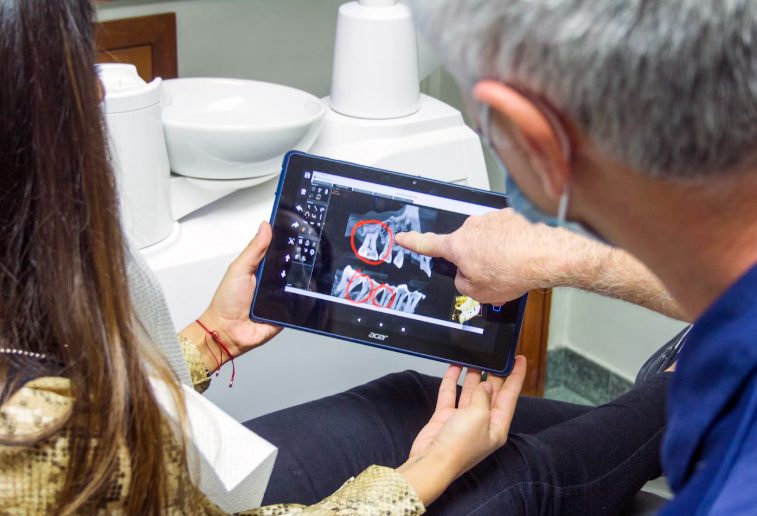
@ShahidNShah


Wisdom teeth, also known as third molars, are often viewed as an inevitable dental hurdle for young adults. For decades, the common approach was simple: extract them early, often before they even cause trouble. But as dentistry becomes more focused on prevention, precision and patient-centered care, a new question is emerging—should we always remove wisdom teeth, or is it sometimes better to wait and watch?
This shift represents a broader movement in dentistry: the transition from reactive to preventive treatment, driven by evidence-based decisions and supported by cutting-edge technology.
Historically, routine removal of wisdom teeth was considered a proactive choice, especially during the teenage years or early twenties when the roots are still developing and recovery is typically smoother. The thinking was that these teeth often cause problems—becoming impacted, causing crowding or leading to infections—so why not eliminate the risk altogether?
But now, this long-standing default is being challenged. A growing number of oral health professionals advocate for a more individualised approach, weighing risks, benefits and the patient’s unique oral anatomy. The goal is no longer simply to prevent potential problems, but to ensure minimally invasive intervention that aligns with long-term health and comfort.
Wisdom teeth are the last set of molars to emerge, usually between the ages of 17 and 25. In some cases, they erupt normally and function just like any other tooth.
But often, they come in at odd angles or fail to erupt fully due to limited space in the jaw—becoming “impacted.” Impacted wisdom teeth can press against other teeth, create deep pockets where bacteria thrive, or become painful and inflamed.
According to the American Association of Oral and Maxillofacial Surgeons, around 85% of wisdom teeth will eventually need to be removed due to complications. However, this statistic also implies that a significant minority may never cause issues—and could be left in place under careful observation.
In a preventive dentistry model, “watching” does not mean ignoring. It means actively monitoring the development of wisdom teeth with regular checkups, digital imaging and patient feedback.
Patients may be advised to retain their wisdom teeth if:
These cases require periodic assessment. Advanced imaging techniques like cone beam CT scans allow dentists to track subtle changes in tooth position, root development or surrounding bone health—helping catch any red flags early before pain or damage sets in.
On the other hand, wisdom tooth extraction may be necessary it they:
For many young adults, removal is still recommended—especially if imaging reveals clear signs that the teeth will not erupt safely. The benefit of early removal lies in easier healing and fewer complications, particularly before the roots have fully formed.
However, in line with the principles of minimally invasive care, the decision to remove should be made based on clinical evidence, not just assumptions. Unnecessary surgery carries its own risks—nerve damage, dry socket or infection—especially when done without cause.
One of the biggest shifts supporting this new wisdom-tooth philosophy is the integration of advanced diagnostic tools. Digital X-rays and 3D imaging give dentists a far clearer picture of each patient’s anatomy, allowing for:
Dentistry today is more collaborative than ever before. Patients are encouraged to ask questions, explore options and make informed decisions about their care.
Instead of telling patients that removal is “just what’s done,” clinicians are now discussing:
This shift not only improves health outcomes but builds trust—something especially valuable for patients with dental anxiety or a history of unpleasant procedures.
Wisdom teeth are a reminder that one-size-fits-all thinking has no place in modern dentistry. The future lies in precision prevention—using technology, evidence and clinical judgment to make decisions that suit each individual.
Whether a patient keeps their wisdom teeth or not should depend on their specific situation. And as tools and techniques continue to evolve, so too will our ability to preserve health with the best outcomes.

Chief Editor - Medigy & HealthcareGuys.
Did you know that around 50-60% of dental practitioners have performed implants using digital technologies since the past few years? Well, this shift makes sense, considering how these digital …
Posted Apr 3, 2025 Dental Care Dentistry
Connecting innovation decision makers to authoritative information, institutions, people and insights.
Medigy accurately delivers healthcare and technology information, news and insight from around the world.
Medigy surfaces the world's best crowdsourced health tech offerings with social interactions and peer reviews.
© 2025 Netspective Foundation, Inc. All Rights Reserved.
Built on Apr 16, 2025 at 5:55am